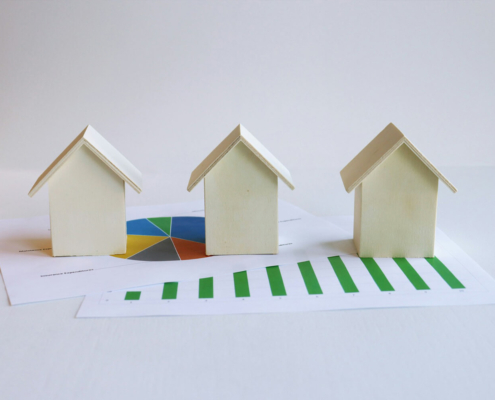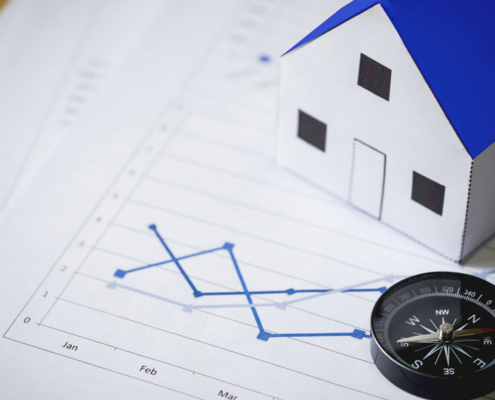Talk to an Expert!
Want to to learn more or see how if applies to your project? Let’s Connect!
Leveraged vs. All-Cash Flipping: Which Strategy Yields Higher Returns?
Introduction
When it comes to flipping real estate, investors are often faced with one crucial question: Should I use leverage or pay all cash? While both approaches have their pros and cons, the decision you make can significantly impact your bottom line.
This blog post breaks down the financial returns of a fix-and-flip property using leverage (borrowed money) compared to using all cash, complete with real-world numbers, ROI calculations, and key insights to help you choose the right strategy for your next flip.
Why the Way You Finance Your Flip Matters
Real estate investing is as much about finance strategy as it is about picking the right property. Leverage—borrowing money to finance part of your deal—can dramatically increase your return on investment (ROI). But it can also increase your risk.
On the other hand, paying all cash eliminates debt and interest payments, offering peace of mind and simplicity, but may deliver lower ROI because your money isn’t working as hard as it could be.
To understand which path is better, let’s run the numbers.
Flip Property Example: All-Cash vs. Leverage
Let’s assume you’re flipping a single-family home in a growing market. Here’s the base data:
| Item | Value |
|---|---|
| Purchase Price | $200,000 |
| Rehab Costs | $50,000 |
| After Repair Value (ARV) | $320,000 |
| Holding Time | 6 months |
| Selling Costs (agent, etc.) | $25,600 (8%) |
| Other Holding Costs | $4,000 |
Now let’s compare two scenarios:
- 1All-Cash Flip – You pay 100% cash for the property and rehab.
- Leveraged Flip – You finance 75% of the purchase price with a private lender at 12% annual interest, paying the rest in cash.
Scenario 1: All-Cash Flip
Upfront Capital Required:
– Purchase: $200,000
– Rehab: $50,000
– Total Investment: $250,000
Sale Proceeds:
– ARV: $320,000
– Selling Costs: $25,600
– Net Sale Price: $294,400
Profit Calculation:
– Net Sale: $294,400
– Total Investment: $250,000
– Holding Costs: $4,000
– Net Profit = $294,400 – $250,000 – $4,000 = $40,400
ROI Calculation:
– ROI = ($40,400 / $250,000) × 100 = 16.16%
– Annualized ROI (6 months): 16.16% × 2 = 32.32%
Scenario 2: Leveraged Flip (75% LTV)
Loan Details:
– Loan Amount: 75% of $200,000 = $150,000
– Interest Rate: 12% annually
– Loan Term: 6 months
– Interest: $150,000 × 0.12 ÷ 2 = $9,000
Cash Required:
– Down Payment: $50,000
– Rehab: $50,000
– Loan Interest: $9,000
– Holding Costs: $4,000
– Total Cash Outlay: $113,000
Sale Proceeds:
– Net Sale Price: $294,400
– Loan Repayment: $150,000
– Net Cash Back = $294,400 – $150,000 = $144,400
Profit Calculation:
– Profit = $144,400 – $113,000 = $31,400
ROI Calculation:
– ROI = ($31,400 / $113,000) × 100 = 27.79%
– Annualized ROI (6 months): 27.79% × 2 = 55.58%
Side-by-Side Comparison
| Metric | All Cash | Leveraged (75% LTV) |
|---|---|---|
| Total Cash Invested | $250,000 | $113,000 |
| Net Profit | $40,400 | $31,400 |
| ROI | 16.16% | 27.79% |
| Annualized ROI | 32.32% | 55.58% |
Benefits of Using Leverage in a Flip
- Higher ROI – Leveraging allows you to earn more on less capital.
- Scalability – Instead of putting $250K into one property, you could do multiple flips at once using leverage.
- Liquidity – Keeping more cash on hand gives you flexibility to handle unexpected costs or new opportunities.
- Tax Advantages – Interest on your loan may be tax deductible.
Risks of Using Leverage
- Financing Costs – Interest eats into profits. Delays increase costs.
- Market Risk – A downturn could reduce your ARV or delay your sale—while loan payments still come due.
- Cash Flow Pressure – You’ll need to cover interest, rehab, and holding costs regardless of whether the property sells.
- Loan Approval & Lender Terms – Includes fees, appraisals, and draw schedules.
When to Use All Cash
Paying all cash might make sense if:
– You’re new to flipping and want to avoid financial pressure.
– You want a quick, clean closing.
– The cost of financing is too high.
– You prefer lower risk and simplicity.
Hybrid Strategy: The Best of Both Worlds?
Some investors use a hybrid strategy, paying cash for the purchase but financing the rehab—or using a HELOC or private lender for part of the funds. This can offer flexibility while still boosting ROI.
SEO Summary: Leveraged vs. All-Cash Flipping
Whether you’re considering using a private lender, hard money loan, or tapping into your own capital, remember:
– Leveraged flips offer higher ROI but more risk.
– All-cash flips offer stability and simplicity, but lower returns.
– The right strategy depends on your financial situation and experience.
Final Thoughts
Understanding the return on investment from both leveraged and all-cash flips is essential. Making your money work harder through intelligent use of leverage can help you scale faster and build long-term wealth.
Before diving in, run the numbers, assess your risk tolerance, and build a team of trusted lenders, contractors, and advisors.
Looking for a trusted private lender for your next flip? We specialize in fix-and-flip loans, fast funding, and construction draw management. Contact us today to get pre-approved and take control of your next real estate investment.
Want More Real Estate Investing Tips?
Subscribe to our newsletter and get expert insights on flipping, financing, and maximizing your profits delivered straight to your inbox.







